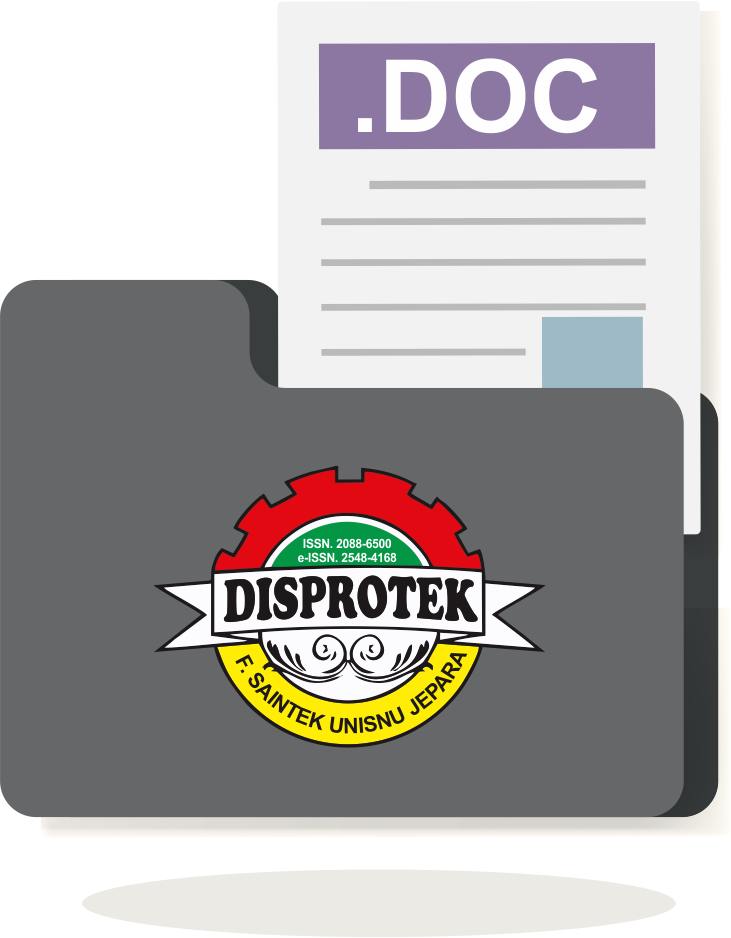PERBAIKAN SISTEM ANTRIAN FASILITAS KESEHATAN DENGAN DISIPLIN ANTRIAN PRIORITAS MENGGUNAKAN SIMULASI KEJADIAN DISKRIT
Abstract
IMPROVING THE QUEUING SYSTEM OF HEALTHCARE FACILITY UNDER PRIORITY SERVED DISCIPLINE USING DISCRETE EVENT SIMULATION
Although discrete event simulation techniques have been extensively employed to enhance queuing systems in healthcare facilities, research on simulation methods that incorporate priority queuing discipline and decision-making with aspiration-level models remains limited. This research aims to provide a case study on improving the queuing system in health facilities considering a priority queuing discipline. In this study, the simulation was used due to the complex nature of the observed system. The system comprises first-come-first-served, priority-serve queuing disciplines and multi-channel single-phase and single-channel multi-phase queues. The preliminary analysis revealed that Polyclinic 2 and the Pharmacy had the longest waiting times in the queue, with average durations of 11.48 minutes and 11.38 minutes, respectively. Enhancements were implemented by adding one server into both service facilities and validating the simulation model. The simulation indicated a decrease in the average waiting time at Polyclinic 2 and Pharmacy service facilities to 4.36 seconds and 5.75 seconds, respectively. These results align with the desired expectations of patients and health center management, who aim for a maximum waiting time of 8.2 minutes and an idle server rate of 27%. This research contributes to the existing literature on applying simulation techniques to address queuing system issues in healthcare facilities and incorporating aspiration-level models into simulation models. Furthermore, the proposed model can be utilized by management to ascertain the optimal quantity of health facilities.
Meskipun metode simulasi kejadian diskrit telah banyak digunakan untuk memperbaiki sistem antrian fasilitas kesehatan, penggunaan metode simulasi yang mempertimbangkan disiplin antrian prioritas dan pengambilan keputusan dengan model tingkat aspirasi masih sedikit dilakukan. Atas dasar inilah maka penelitian ini bertujuan untuk memaparkan studi kasus perbaikan sistem antrian fasilitas kesehatan yang terdapat disiplin antrian prioritas. Metode simulasi digunakan dalam penelitian ini karena kompleksitas sistem amatan, yang terdiri dari disiplin antrian first-come-first-served dan priority served, serta antrian multi-channel single-phase dan single channel multi phase. Hasil identifikasi awal diperoleh data bahwa waktu tunggu dalam antrian tertinggi terjadi pada fasilitas pelayanan Poliklinik 2 dan Apotek dengan rata-rata waktu menunggu berturut 11,48 menit dan 11,38 menit. Perbaikan dilakukan dengan menambahkan satu server pada kedua fasilitas pelayanan dan dilakukan pengujian pada model simulasi. Hasil pengujian diperoleh perbaikan rata-rata waktu menunggu pada fasilitas pelayanan Poliklinik 2 dan Apotek menjadi 4,36 menit, dan 5,75 menit, dimana hasil ini telah sesuai dengan tingkat aspirasi pasien dan pengelola puskesmas yaitu waktu menunggu maksimal 8,2 menit dan server menganggur 27%. Penelitian ini dapat menambah literatur penggunaan simulasi dalam penyelesaian masalah sistem antrian di fasilitas kesehatan dan pertimbangan model tingkat aspirasi dalam model simulasi. Selain itu, model yang telah dikembangkan dapat digunakan oleh pihak manajemen untuk menentukan jumlah fasilitas kesehatan terbaik.
Keywords
Full Text:
PDFReferences
BPJS, “Panduan Layanan Bagi Peserta Jaminan Kesehatan Nasional - Kartu Indonesia Sehat (JKN-KIS),” 2022.
B. Kesehatan, “Aplicare,” https://faskes.bpjs-kesehatan.go.id/aplicares/#/app/peta, 2023. https://faskes.bpjs-kesehatan.go.id/aplicares/#/app/peta.
P. Amalia and N. Cahyati, “Queue analysis of public healthcare system to reduce waiting time using flexsim 6 . 0 software,” Int. J. Ind. Optim., vol. 1, no. 2, pp. 101–110, 2020.
R. Arifin and R. Dio, “Pemodelan Sistem Antrian Klinik Kesehatan XYZ pada Dokter Spesialis dengan menggunakan Flexsim,” vol. 1, no. Desember, pp. 65–70, 2022.
A. Santosa, M. Sagathi, and M. R. Situmorang, “Simulation of First Level Health Care Facilities to Reduce Patient Flow Time,” in INCITEST 2019, 2019, pp. 1–5, doi: 10.1088/1757-899X/662/4/042004.
O. Kaya, A. Teymourifar, and G. Ozturk, “Socio-Economic Planning Sciences Analysis of different public policies through simulation to increase total social utility in a healthcare system,” Socioecon. Plann. Sci., no. September, p. 100742, 2019, doi: 10.1016/j.seps.2019.100742.
C. Harrel, B. K. Ghosh, and R. O. Boyden, Simulation using ProModel, 2nd ed. New York: Mc Graw Hill Higher Education, 2004.
M. Gunal and M. Pidd, “Discrete event simulation for performance modelling in health care : a review of the literature,” J. Simul., vol. 4, pp. 42–51, 2010, doi: 10.1057/jos.2009.25.
G. J. Melman, “Balancing scarce hospital resources during the COVID-19 pandemic using discrete-event simulation,” vol. 19, pp. 356–374, 2021.
A. Anggraeni, N. K. Dwidayanti, and Sunarmi, “Optimalisasi Sistem Antrian pada Loket Farmasi dengan Model Tingkat Aspirasi,” UNNES J. Math., vol. 8, no. 2, pp. 42–51, 2019.
H. A. Taha, Operation Research An Introduction 10th Edition. Edinburgh: Pearson Education Limited, 2017.
J. Banks, J. S. Carson II, B. L. Nelson, and D. M. Nicol, Discrete-Event System Simulation, 4th Editio. Prentice Hall, 2004.
Balikpapan, “Hasil Survey Kepuasan Masyarakat Tahun 2020,” Hasil Survey Kepuasan Masyarakat, 2020. https://web.balikpapan.go.id/detail/read/58881.
R. Restiana, “Pemodelan dan Simulasi Sistem Antrian Pelayanan Poliklinik serta Usulan Perbaikan dengan Menggunakan Flexsim,” Universitas Islam Indonesia, 2022.
R. E. Walpole, R. H. Myers, S. L. Myers, and K. Ye, Probability & Statistics for Engineers & Scientist, Ninth Edit. Boston: Prentice Hall, 2012.
M. A. Isfirory, A. Suseno, and Winarno, “Peningkatan Service Level pada Sistem Antrian Pengambilan Obat di Puskesmas Bojong Rawalumbu Menggunakan Metode Simulasi,” J. Integr. Syst., vol. 4, no. 1, pp. 41–56, 2021.
DOI: https://doi.org/10.34001/jdpt.v15i1.4954
Article Metrics

This work is licensed under a Creative Commons Attribution-ShareAlike 4.0 International License.
Disprotek Indexed by:
DISPROTEK: Journal of Informatics Engineering, Information Systems, Electrical Engineering, Industrial Engineering, Civil Engineering, and Aquaculture is licensed under a Creative Commons Attribution-ShareAlike 4.0 International License.

_001.png)




















